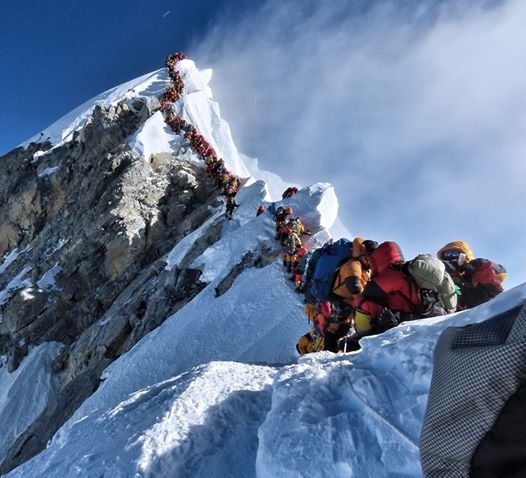The current leadership in India, described as “nationalist” (hmmm, there’s a lot of that going around), has been re-elected in a convincing victory:
Early election results indicate a landslide victory for Indian Prime Minister Narendra Modi’s Hindu Nationalist party.
It looks like the Modi-led Bharatiya Janata Party (BJP) and allies will receive around 350 out of 542 seats, well over the 272 majority mark.
India’s grand-old socialist Congress party, which ruled the country for 54 of its 67 years since independence, may pick up around 80 seats, slightly better than its worst ever showing in the 2014 elections. The electoral landscape has mostly wiped out India’s other left-wing and Communist parties, traditionally strong in the eastern and southern states.
Following his election victory five years ago, Modi has pursued social conservative policies at home, investing in rural development, sanitation, and poverty elevation. Apprehensive of China’s growing influences in the region, he sought closer ties with Western allies, building strong personal relationships with President Donald Trump and Israeli Prime Minister Benjamin Netanyahu.
So this seems to be part of a worldwide trend.
The following reportage also seems to be a trend:
Modi’s reelection came as a shock to the mainstream media, which have long shown criticism of his supposed “anti-Muslim” agenda.
“India’s minorities fear return of Modi,” CNN claimed. The BBC parroted the sentiment, reporting: “India’s Muslims fear for their future under Narendra Modi.” The UK broadcaster added that with “an increase in hate crimes against Muslims in India in recent years, some fear the world’s largest democracy is becoming dangerously intolerant under the Hindu nationalist Bharatiya Janata Party (BJP).”
India has a history of some terribly dark episodes of religious violence—and the Muslim/Hindu portion involved an extraordinary amount of Muslim violence early on, although it’s not been limited to that side. It’s way beyond the scope of this post to describe the history of bloody interactions as well as peaceful co-existence between the two groups in India, but let’s just say that it’s occurred many times and sometimes on a very large scale.
Here’s a sampler:
During the Muslim conquests in the Indian subcontinent…Muslim rulers massacred Hindus, Jains and Buddhists while attacking temples and monasteries, while also forcing them to convert including on the battlefield. Most of the great temples in Northern Indian subcontinent were destroyed during the Muslim rule. Will Durant calls the Muslim conquest of India “probably the bloodiest story in history”, consequently between the years 1000 CE and 1500 CE, the population of the Indian subcontinent decreased from 200 to 125 million.
Skipping ahead to the Indian drive for independence from British rule during the early-to-mid-20th Century, many activists on both the Hindu and the Muslim side were for a unified India. But the divisive forces won, creating the bloodbath resulting from the partition of colonial India into a predominantly Hindu “India” portion and the predominantly Muslim nation of Pakistan:
The partition displaced between 10 and 12 million people along religious lines, creating overwhelming refugee crises in the newly constituted dominions; there was large-scale violence, with estimates of loss of life accompanying or preceding the partition disputed and varying between several hundred thousand and two million.
That’s an enormous simplification of the long and complex history of the interaction between Hindus and Muslims in the area. But suffice to say it often was far worse in the past than it is today, and that conflict between the groups certainly wasn’t invented by Modi and his party.
So, is it true that India’s Muslims (who are still very numerous, although a definite minority) have anything special to fear from the election of Modi? Doing a quick Googling now, I can see just from the headlines that the leftist media is covering the fear angle heavily (“How Narendra Modi Seduced India With Envy and Hate” in the NY Times, for example).
Is the increasing enmity in India for real? It does seem as though something’s going on that appears to be worsening and polarizing relations between the two communities, but its cause (is it Modi or something else?) and its extent are very unclear.

